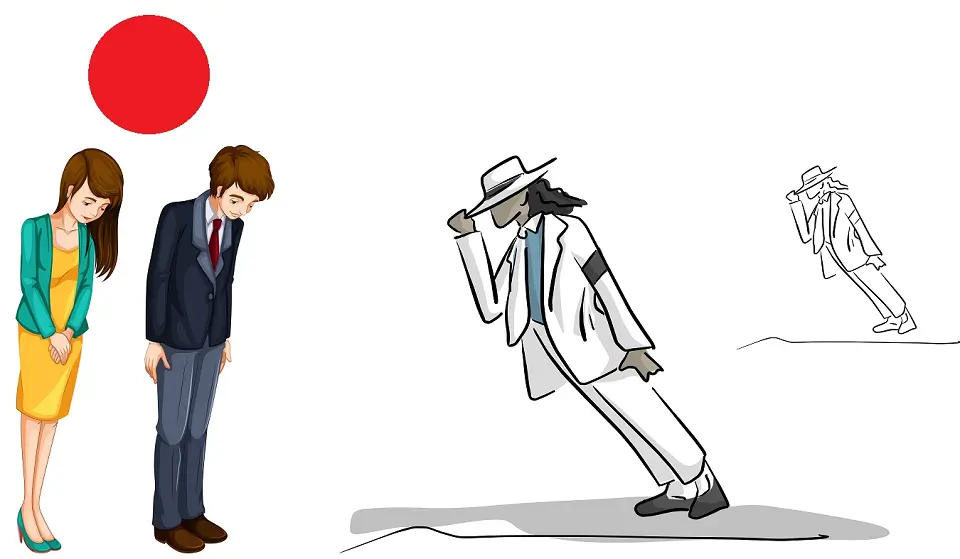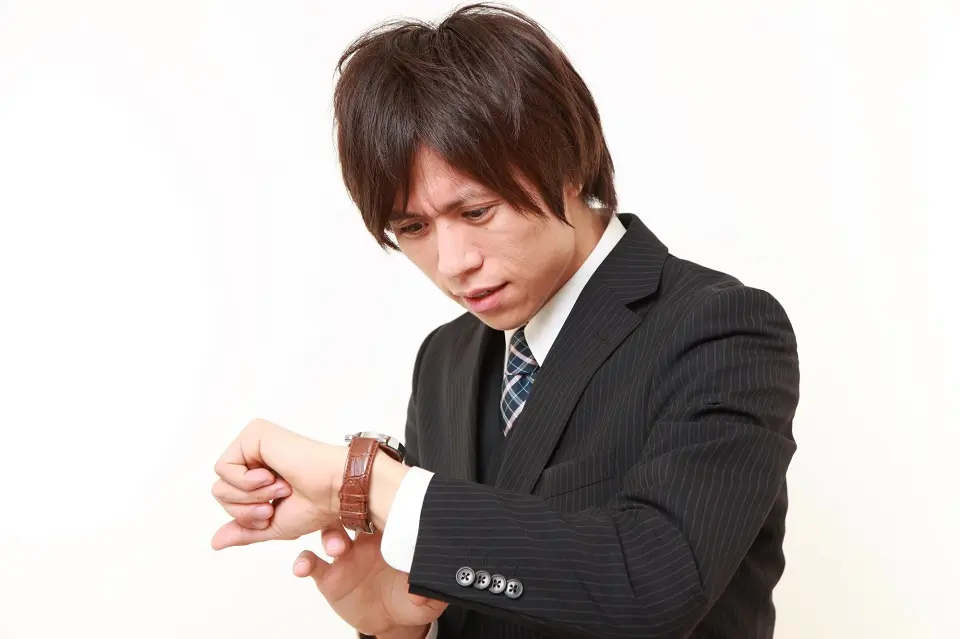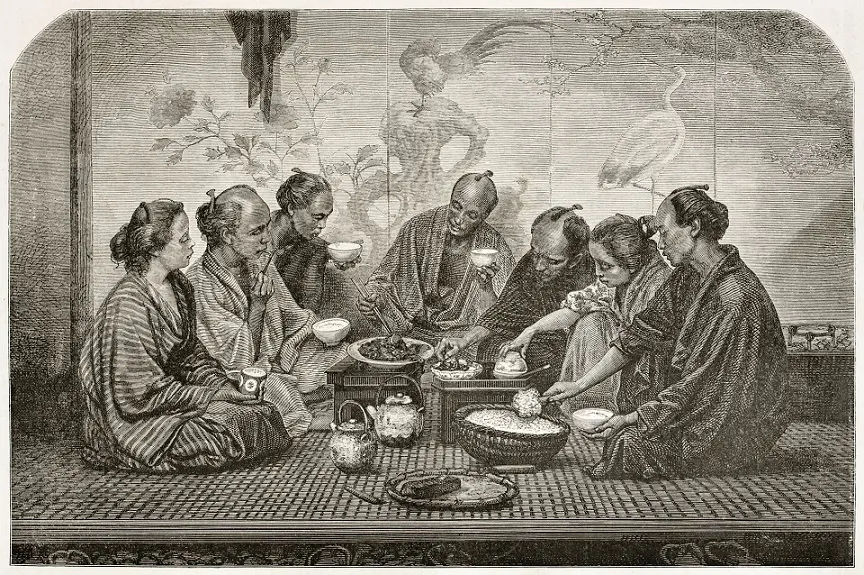Japanese Culture and Traditions

Japanese culture has always fascinated many foreigners, especially Westerners. The reason for this fascination is simple—opposites attract.
Japanese culture, along with most Asian cultures, contrasts a lot with Western cultures, and that contrast works like a magnate for many. This article aims to dive deeper and understand various aspects of Japan’s unique culture.
Culture and traditions change over time. The only difference between the two is that culture, the root of any society, changes very slowly, but changes in traditions are comparatively faster. The same holds true in Japan, where we still witness the society’s deep respect for its ancient cultural values.
Why and for Whom is this Article?
Cultures and traditions differ from country to country. For countries like Japan, with a long history of native civilization, it’s more about deep-rooted cultures.
For countries where native civilizations became minorities, like the USA, it is more about the unwritten rules people follow to maintain society’s values. These rules may not have a long history. Still, practically, they are the traditions that society follows, while different people coming from different cultures may follow their own cultures when coming to that country.
Japan has a long history. Even if we do not count the initial human habitation, estimated to be 38 to 39,000 years back, Japan’s first known historical and cultural period, the Jōmon period, goes back to 14,000 BC.
Moreover, for a long time, It was a close island country with little interaction with the outside world, except with countries geographically close to it.
Because of that history and unique issues like frequent natural disasters, Japan has developed a unique culture, and Japanese society strongly respects and embraces that culture. Cultural traits are ingrained in Japanese people, and in a way, we can say that it’s the culture that makes Japan what it is, not the other way around.
The above explanation partly answers the “Why” part of the question. However, before going to the remaining part of the question, let’s discuss the “Whom” part.
Well, you may just be curious about Japan or wish to visit Japan as a tourist, but wishing to see yourself fitting in with the occasional Japanese people you interact with would be reason enough.
However, if you plan to conduct business with Japan or work in Japan, understanding Japanese culture is a must. And why only work? If you plan to live in Japan for a longer term, won’t it make your personal life better and more fulfilling if you fit into the society better?
But Why is Understanding Japanese Culture Important?
Here comes the second part of the previous question about “Why,” i.e., why it is crucial to understand Japanese cultural aspects to live in Japan or conduct business there.
Can we expect to fit in a society with ONLY our way of thinking?
“When in Rome, do as Romans do” was not a saying that originated in Japan. So, what’s wrong if someone tells you, “When in Japan, do as Japanese do?”
Understanding the Japanese ways of thinking, accepting them as the way of life in Japan, respecting them, and adapting to them do not only make the life smoother but enjoyable when you live in this country. So here we go, diving deeper into the important aspects of Japanese culture.
Deep Rooted Japanese Cultural Aspects: An Intro
Japanese culture is based on social harmony, respect for nature, collective responsibility, and hard work. Regional diversity enriches the Japanese cultural landscape, with distinct customs, foods, and festivals in different prefectures. Education plays a crucial role in preserving these traditions, instilling a deep sense of cultural identity and respect for heritage from a young age.
There are many deep-rooted aspects of Japanese culture and traditions that Japanese people value highly and follow religiously. Knowing and understanding these cultural aspects of Japan is vital for any foreigner to fit into Japanese society and have a better life in Japan.
Japanese culture has many peculiar characteristics that shape the Japanese people, society, and life. Understanding these cultural aspects of Japan is vital to navigating life more easily here.
This article will focus on Japanese cultural aspects, the factors that influenced it during the long history of Japan, including the geographical factors, and also some of the most famous Japanese proverbs that act as a mirror to show us what the culture of Japanese society values the most.
However, first of all, let’s discuss why it is important to have the insight of the cultural values of Japan:
Core Values of Japanese Culture
When foreigners think of Japan, they may imagine a modern, high-tech society, delicious food, sushi, Kimonos, Sensu fans (folding hand fans), samurai, etc. So, what do they think of the Japanese people, and what are their common traits? Many would say polite, friendly, punctual, and shy.
And those foreigners are not wrong about their understanding of Japanese society and cultural aspects. The traits mentioned above and ideals are deeply rooted in history and tradition and woven into the fabric of Japanese society. Of course, we see these traits in actions, but it is essential to go deeper to understand Japan’s cultural aspects and society.
To begin with, let’s first have a look at some of the peculiar traits of Japanese people and Japanese society and the core values that shaped the culture in Japan:
Group Harmony and Respect

Japan is a homogeneous society that prioritizes the group over the individual. The saying “the nail (individual) that sticks out is hammered down” rings true and is an ideal way to describe Japanese culture and people.
Japanese people follow collectivism as the norm. The group harmony of Japanese society applies in daily life, sports, and the workplace, and people behave humbly and respectfully. However, Japanese society also effectively balances group harmony or collectivism with individualism or competitive spirit.
In Japan, the group comes before the individual, and people conform to the norm. From a very young age, people learn discipline and respect, which is why there are many unspoken rules of etiquette in Japan.
Japanese people are non-confrontational and put others ahead of themselves. There is not much boasting, and Japanese people tend to downplay their actions, achievements & accomplishments. You often hear the phrase by someone who received praise saying, “iie iie, okage sama desu,” meaning “no-no, it’s thanks to you.”
Japanese people will show this gesture of humbleness even though someone did not really help with the accomplishment.
Another common phrase, often seen on television, is “yarasasete itadakimashita no de arigato gozaimashita,” meaning “thank you for allowing me to participate” in performing something, whether participating in an event or activity.
Japanese Proverbs for Cultural Importance of Group Harmony and Respect
One of the best ways to understand the social values a society keeps close to its heart is by the proverbs and sayings, which have been part of the country for hundreds or thousands of years.
So, here are two old sayings that reflect the importance that Japanese culture puts on the values of ” Group harmony and Respect for Others:”
- 和を以て貴しと為す (Wa o motte tattoshito nasu): “Harmony is to be valued.” This saying speaks to the high value placed on group harmony in Japanese society.
- 一を聞いて十を知る (Ichi o kiite ju o shiru): “Hear one and understand ten.” It expresses the cultural expectation that one should understand and respect the implicit, unspoken elements in communication, which is key to maintaining group harmony.
- 同じ釜の飯を食う (Eating meals from the same iron pot): This Japanese saying is another excellent example of the importance of group harmony and a sense of belonging to a group or community.
Silence and Subtlety in Japanese Communication
Japanese people don’t talk as much, except while drinking, and are more reserved but not necessarily shy. Unspoken forms of communication in Japan are based on body language and Kuki wo yomu, meaning “reading the air (atmosphere)” to gauge how others feel.
It is a very important aspect of society. People are less aggressive and direct to be non-confrontational and choose the middle ground. Sometimes, this is frustrating because you don’t get a straight answer and feel confused.
Japanese Proverbs Reflecting the Importance of Silence
- 沈黙は金 (Chinmoku wa kin): “Silence is golden.” This common saying, shared by many cultures, underscores the value of quietness and introspection. It suggests that, in many situations, saying nothing is preferable to speaking.
- 口は災いの元 (Kuchi wa wazawai no moto): This translates to “the mouth is the source of disaster.” It underscores the importance of careful speech, reflecting the value of politeness and respect for others in Japanese culture.
These sayings reflect the cultural value of silence and careful speech in Japan, aligning with a more reserved communication style.
If we go deeper, valuing silence does not just mean not speaking but communicating better by giving more importance to listening and understanding others’ points of view. In a way, it fits perfectly with Japan’s central cultural aspect of group harmony.
However, there are always cons against pros and negatives against positives, like the world can’t exist without having both the north and south poles. Therefore, some people can take it negatively, and yes, they would have reasons to support their way of thinking, but at times, maintaining silence is constructive, especially if it avoids unnecessary conflicts.
Focus on Cleanliness
Japanese take cleanliness seriously; most homes are tidy, neat, and orderly. Because most homes are relatively minor compared to many other countries, it is one way to clear clutter and make more space.
However, not being tidy, especially outside the residence, may upset the neighbors. Therefore, people will call it meiwaku, meaning someone who causes inconvenience to others. For example, garbage disposal in Japan is very orderly. The disposal is done by separating the type of trash on a given day — burnable, non-burnable, bottles, and cans.
While segregating the garbage according to the guidelines is necessary, not doing so will also upset the neighbors who use the same garbage collection place.
Many who come to Japan will notice that there are not many trash cans in public places, but people will not litter. This is because they tend not to eat and walk on the go. If they do, people will hold on to wrappers and pet bottles until they can throw them out.
Some vending machines have boxes with holes for plastic bottles and cans for recycling. Even during the hanami or cherry blossom viewing, people properly throw out their trash and do not leave it behind. Also, it is an unwritten rule in Japan not to eat on the train because it may cause a mess or the smells may bother others.
Japanese Proverbs Signifying the Cultural Importance of Cleanliness
- “水鳥あと水を汚さず、波立たず” or “Mizudori ato mizu o yogosazu, namitatazu” (“As waterfowls move on to other places, they pass through without dirtying the water or making waves.”) This proverb is an excellent example. This proverb emphasizes not only physical cleanliness but also minimal disturbance to the environment, which is an important aspect of Japanese culture.
- 魚心あれば水心 or “Sakana kokoro areba mizu kokoro” (“If a fish is kind to the water, the water will be kind to the fish”): This proverb illustrates a mutual relationship between beings and their environment, which can indeed be seen as a metaphor for cleanliness. If the fish (a metaphor for people) treat their water (their surroundings or environment) well, the water will benefit them. While this proverb may not be about cleanliness directly, it expresses respect for one’s environment, including keeping it clean and free from pollution. So, your interpretation holds true. In the broader sense, it ties into the Japanese value of harmony and respect for nature, which encompasses cleanliness.
Safety and Caring for Others’ Needs
Japan is known to be safe, with a meager crime rate. This is not to say it’s crime-free, but generally, you can walk alone at night without being concerned. You may lose your wallet or cell phone; however, almost without fail, you will get it back.
So why is this the case? First, Japanese society values community and looks out for one another. Also, Japanese parents teach children to be strictly disciplined and understand right from wrong at a very early age. So, if you commit a big mistake in Japan, it shames you and your family.
In Japan, guns are not as common as in America. Nowadays, there are online scam artists and financial criminals, such as people wielding a knife, but these are rare exceptions.
Safety aspects are ideals deeply rooted in the Japanese culture and the fabric of Japanese society. In addition, there is a great sense of pride and community, and people are very hospitable, especially to foreigners and strangers, if they find them lost or in a bit of a bind.
Japanese Proverbs Signifying the Cultural Importance of Caring for Others
The following Japanese proverb highlights the cultural importance of caring for others before the self:
他山の石以て玉を攻むる (Tazan no ishi motte tama o osomeru): “Using the stones from other mountains to polish one’s gem.”
The literal translation of this proverb may give it a selfish meaning, but it means “Learning from others’ lessons to polish the gem.” This proverb implies that we should learn from and care for others, reflecting the collective culture.
The Art of Polite Refusal in Japanese Culture
The expression Enryo suru (えんりょうする) means to refrain or to hold back, which is typical Japanese behavior.
For example, even if someone other than family or friends offers some expensive sweets or gifts, you may not accept them, though you may want to. Hence, the reason for refraining.
Japanese people consider it polite to offer something to others but rude to accept readily. This is because you don’t want to be seen as selfish. And if you accept, there is an obligation to return, which doesn’t always make sense, but this is an unspoken rule and an essential part of the culture of Japan.
Importance of Being Punctual

Japanese are punctual, and it is disrespectful to be late, not only for work but in general. Some will arrive and be in the office much earlier than anyone else, even before regular office hours.
You will often see Salaryman or employees in a suit and tie sprinting through the station to ensure catching the particular train, while the following train is just after 3 minutes.
Punctuality is part of the cultural ideal of showing respect for others, so being late is viewed as a burden to the rest of the group. Therefore, apologetic bows with “Osokunatte Sumimasen” or apologies for being late are in order. This needs to be directed not only to your colleagues but also separately to your boss.
Being on time is a strict protocol in Japan. While a quick “sorry for being late” may be acceptable in other countries, it is not in Japan.
(You may also like to read about the Japanese work culture and business etiquette in Japan.)
Historical Periods Which Shaped Japanese Culture

Japan’s culture is known for its deep traditions and rapid modernization, creating a unique blend of old and new. Let’s break it down into several historical periods:
Jōmon Period (c. 14,000–300 BCE)
The Jōmon period was the era of Japan’s earliest known civilization. The Jomon people lived as hunter-gatherers and made notable Japanese pottery often decorated with cord markings—hence the name Jomon, which means “cord pattern.”
Kofun and Asuka Periods (300–710)
Kofun and Asuka Periods are known for the advent of Buddhism from the Korean Peninsula and the formation of a central government under the Yamato Court.
The Kofun period is named after the large keyhole-shaped burial mounds (kofun) constructed for the ruling elites. This era started shaping Japanese culture in a way that we also witness in today’s Japan.
Nara Period (710–794)
During the Nara period, the capital was moved to Heijo-Kyo (present-day Nara), and the country began further absorbing Chinese culture, including its writing system, political institutions, and Buddhism. Many of Japan’s most famous temples, such as Todai-ji, were built during this period.
Kamakura Period (1185–1333)
This era marked the start of samurai-led governments, with the shogun becoming the de facto ruler of Japan. Buddhism diversified with the spread of Zen and Pure Land sects, which offered simpler, more accessible religious practices for common people.
The Kamakura period also saw the development of important cultural and artistic forms. For instance, martial arts flourished, with disciplines like swordsmanship and archery being refined. War tales like “The Tale of the Heike” became popular in literature.
In the arts, there was a move towards more realistic and less idealized representations, reflecting the influence of Zen’s appreciation for the transience and imperfection of life.
In sum, the Kamakura period had a lasting impact on Japanese culture, with its influence being seen in everything from religious practice and philosophical thought to art, literature, and societal values.
Muromachi Period (1336–1573)
The Muromachi period was marked by civil war and the spread of cultural forms such as Noh drama, tea ceremony, flower arranging, and ink painting, which were often patronized by the samurai class.
Edo Period (1603–1868)
During the Edo period of peace under the Tokugawa shogunate, Japan was effectively isolated from the rest of the world, leading to a flourishing indigenous culture. Ukiyo-e woodblock prints, kabuki, and bunraku became popular while the middle class gained prominence.
Meiji Period (1868–1912)
Japan’s rapid modernization and Westernization characterize the Meiji period. The country opened up to foreign influence, adopted a constitution, and built its military power. Western-style clothing became more common, and Shinto was promoted as the state religion.
The Meiji period set the foundations of a cultural shift for modern Japan, which we see today. Let us dive a bit deeper into the highlights as follows:
Modernization and Westernization during the Meiji Period:
The Meiji government initiated a comprehensive modernization campaign, known as the Meiji Restoration, aiming to catch up with the Western powers and establish Japan as a modern nation-state.
Western technology, education, legal systems, and military practices were adopted during the Meiji period, leading to a rapid transformation of Japanese society.
Abolition of Feudalism:
The feudal system that had prevailed for centuries in Japan was dismantled during the Meiji period.
The samurai class, which had played a central role in feudal Japan and its culture, lost its privileges and was replaced by a modern centralized government and bureaucracy. This led to significant social changes and the emergence of a more egalitarian society.
Emphasis on Industrialization:
The Meiji government greatly emphasized industrialization to strengthen Japan’s economy and military power.
New industries were developed, infrastructure was modernized, and railways were built. The shift from an agrarian society to an industrial one profoundly impacted people’s lives and altered the traditional agrarian-based culture in Japan.
Education Reforms:
The government implemented sweeping reforms in education, making it compulsory for children and establishing a modern public education system.
The curriculum was restructured to incorporate modern sciences, technology, and Western knowledge. Education became more accessible to the general population, contributing to social mobility and the spread of new ideas.
Western Influences on Dress and Lifestyle:
Adopting Western clothing styles became widespread among the urban population, especially the upper and middle classes. Traditional kimono garments gradually gave way to Western-style suits and dresses. Western cuisine, etiquette, and social customs also began influencing daily life.
Japanese Cultural Renaissance:
While Japan embraced Western influences, it also made a conscious effort to preserve and revitalize traditional Japanese culture. The government actively supported studying and preserving traditional arts, such as tea ceremonies, calligraphy, Japanese pottery, and Noh theater.
This cultural revival in Japan aimed to forge a national identity and foster a sense of pride in Japanese heritage.
The Meiji period marked a dramatic shift in Japanese culture and society. Traditional practices were reevaluated, adapted, or abandoned in favor of modernization and Westernization, leading to a complex blend of old and new elements in Japanese culture that continues to shape the country today.
Taisho and Early Showa Periods (1912–1945)
The Taisho and Early Showa periods saw further Western influence on Japanese culture, industrial growth, and, ultimately, militarization, which led to World War II.
Post-War Showa and Heisei Periods (1945–2019)
After its defeat in WWII, Japan underwent a massive economic recovery to become a global economic powerhouse. Pop culture flourished, with manga, anime, and J-pop becoming worldwide phenomena.
Reiwa Era (2019–Present)
This is the current era of Japan under Emperor Naruhito. Japan continues to balance its rich history and traditions with its status as a high-tech, futuristic society.
Main Factors that Influenced Japanese Culture

The evolution of Japanese culture can be attributed to several factors as follows:
Geography
Japan’s geographic isolation as an island nation allowed it to develop a unique culture with minimal foreign influence for centuries.
This isolation fostered a strong sense of national identity and self-sufficiency. The geographical factors that make Japan prone to natural disasters, ranging from earthquakes to typhoons to volcano eruptions, have shaped many aspects of Japanese culture, e.g., discipline, social harmony, and risk aversion.
Chinese and Korean Influence
Japan selectively adopted and adapted Chinese and Korean cultural elements during various periods. This included Buddhism, Confucianism, the Chinese writing system, architectural styles, and administrative structures. Japan was skillful in assimilating these elements and making them distinctly Japanese.
Religion
Shinto, Japan’s indigenous spirituality, and Buddhism, which were imported from the mainland, played crucial roles in shaping Japanese cultural values, aesthetics, and social structures.
Feudalism and the Samurai Class
The rise of the samurai class and the long period of feudal rule significantly impacted Japanese culture. Concepts like bushido (the way of the warrior), loyalty, and honor became deeply ingrained cultural values.
Isolation Policy (Sakoku)
During the Edo period, the Tokugawa shogunate enacted a policy of national seclusion. This further solidified Japan’s distinct cultural development, leading to a fascination with the West when the country reopened.
Modernization and Westernization
As mentioned above, the Meiji Restoration in 1868 marked a significant shift as Japan actively embraced Western technology, institutions, and cultural elements to modernize and strengthen the nation. The impact of this can be seen in everything from architecture to clothing.
Post-War Economic Boom
After World War II, Japan experienced an economic miracle, becoming a global economic powerhouse. This rapid industrialization and economic success led to significant changes in lifestyle, social structure, and popular culture.
Japanese Culture in Globalizing World
In recent decades, Japan has been both a recipient and a significant contributor to global culture. While Western influences can be seen in contemporary Japanese lifestyle and pop culture, Japan’s cultural exports, especially manga, anime, and video games, have gained massive popularity worldwide.
Cultural Shifts with Demographic Changes
Japan’s aging population and low birth rate have led to societal shifts and have influenced cultural evolution in recent years. The fast-declining population is now making Japanese society more open to foreigners and accepting diverse cultural aspects that differ vastly from the core Japanese culture.
The above factors, among others, have all played roles in shaping the evolution of Japanese culture over the centuries. The uniqueness of the Japanese culture lies in its capacity to absorb and adapt to external influences while maintaining its core identity.
Japanese Traditions: Essential Things
Japanese society’s culture is vastly different from that of the West. Although Japan has been open to the world for the last 150 years, some things still mystify us.
Due to Japan’s isolation during the Edo period (1639-1853), many of the customs here developed without any foreign influence. Although modern Japan has a lot of influence from Asia, Europe, and America, each new idea brought into Japan seems to take on Japanese characteristics and become something entirely different.
Let’s go over some unique aspects of Japanese culture to help you familiarize yourself with Japan.
Following are some of the cultural highlights of Japan:
Bowing
Bowing is an essential feature of Japanese culture and has a lot of meaning. As Japanese culture places heavy emphasis on respect, bowing is one of the primary ways for people in Japan to show their respect.
Though the younger generation sometimes shakes hands to greet very close friends, the usual way to greet others is to bow.
You may want to read a detailed article about the tradition of bowing in Japan.
Japanese Festivals
Japanese festivals are big occasions throughout the country. Some are big and small, but they’re all worthwhile experiences. The Japanese word for the festival is Matsuri (祭り), typically lasting for two days.
The most significant festivals in Japan are connected to the changing seasons, making them an excellent occasion to travel and see the local foliage. Even the most remote towns in Japan come alive during festival season. Other popular festivals are associated with a holiday, such as Minamatsuri (ひな祭り) and Tanabata (七夕).
During the festivals, you can usually find traditional Japanese food stands, games, and traditional and modern entertainment. Japanese locals typically wear a ‘yukata’ (浴衣) during the summer festivals because the cool fabric is comfortable in the heat.
In addition, many famous festivals attract international visitors to different regions of Japan, including Yuki Matsuri in Sapporo, Gion Matsuri in Kyoto, and Kanamara Matsuri in Kanagawa.
Japan’s Gift-Giving Culture
Omiyage (お土産) is the Japanese word for a souvenir. While souvenirs are common worldwide, the art of gift-giving in Japan is unique. Omiyage in Japan typically involves specially made snacks like cookies, Senbei crackers, or Manjū treats.
You can find these snacks all over Japan, but many region-specific flavors come in beautifully packaged boxes. When traveling abroad or across Japan, it is common to bring back these snacks for the people in your office and your family.
It’s not required to bring back any omiyage; however, it is a bit of a social taboo not to get back anything if your colleagues know you went on a trip.
The Tradition of Returning Favors
If you accept gifts, you must return the favor or give a return gift (Okaeshi in Japanese). Japan has many unspoken rules around this, which is a different subject altogether.
For example, if a neighbor brings you fruit or famous snacks from their hometown, it isn’t polite if you do not get them something in return.
That’s why, in Japanese society, people are selective about whom they offer gifts to. By gifting, you are passing an obligation along. Once you gift someone in Japan, it becomes ‘menndokusai’ (troublesome) for those who receive the gift since they will feel obligated to return the favor.
Removing Shoes at the Entrance
When you go to a Japanese home, at the entrance, you’ll likely see a stack of shoes at the door or settle nicely on a shoe rack. In Japan, it’s common for people to take off their shoes at the entrance of the home.
You’ll notice that most homes and buildings have a lowered area called ‘genkan’ (玄関), which is considered part of the outside. You remove your shoes, leave them there, and wear slippers in this area.
The custom of taking off your shoes is mainly for cleanliness and maintaining hygiene. Removing your shoes prevents dirt and other unpleasant things from being tracked inside your home.
Not Eating or Drinking While Walking
Eating while walking seems normal in many other countries, but it’s considered a social taboo in Japan. Not many Japanese people will tell you about it, but they expect you to know.
Pouring Drinks for Colleagues and Business Partners
In Japan, parties, including Japanese office parties, are a lot of fun and an essential part of Japanese culture. It’s a time to see your ordinarily stoic boss and colleagues loosen up and come alive. If you’re dining at an izakaya or enjoying a banquet, there will come a time to pour drinks.
As a gesture of hospitality, you should pour drinks for your colleagues, and one of your colleagues will pour a glass for you. As the night goes on, your partners will inevitably insist on filling your cup as you continue to refill for everyone else.
How to Pour or Receive the Drinks

Please be careful not to hold the bottle of beer or carafe (Tokkuri) for Sake with just one hand while pouring the drinks for others. Instead, your other hand should support the bottle or carafe’s bottom. Holding the serving carafe shows politeness and respect. In addition, it indicates that you are focused on serving others.
Similarly, if another person is pouring your drinks, you should hold your glass or sake cup with both hands. Holding the glass or sake cup while receiving the drinks indicates that you are not taking the gesture for granted but paying attention to respect being received.
Debates About Japanese Culture

There are always discussions and debates about various aspects of Japanese culture. These debates include admiration as well as criticism. However, it’s quite natural to talk more about something that we find contrasting from our experiences. Let’s have a look at these points:
Appreciation
Foreigners exposed to Japanese culture or who have heard or read about its highlights generally and often greatly appreciate it for its discipline, politeness, community spirit & respect for others, extremely high focus on cleanliness and safety, and very high level of punctuality, etc.
Obviously, who can raise questions about this admiration? After all, don’t all these qualities make life convenient, stress-free, and healthy?
Criticism
Because of the very high contrast with other cultures, some side effects of Japanese culture also face some criticism. These points are as follows:
- Work-Life Balance: A strong work ethic can sometimes result in long working hours and high stress, impacting personal life and overall well-being.
- Conformity: There can be a strong pressure to conform and not stand out, which might stifle individual creativity and personal expression.
- Gender Roles: Traditional gender roles are still prevalent in many aspects of Japanese society, which can limit opportunities and equality for women.
- Resistance to Change: While there is respect for tradition, this can sometimes lead to resistance to necessary social and political changes.
- Risk Aversion: Japanese society is normally risk-averse, and for good reason, considering the frequent natural calamities. Risk aversion has been a part of the culture, and there is always some criticism that such an attitude toward risk impacts growth.
A Deeper Look at the Criticism of Japanese Culture
Can anything ever be perfect? Being “perfect” is only an objective, and a well-intentioned journey towards that objective can be termed perfect, whether it’s about a culture or anything in life.
The objective of any society is to unite people around shared values and objectives, such as shared peace and growth.
Undoubtedly, Culture is a fundamental aspect of society, reflecting the collective beliefs, values, customs, and traditions unique to a group. It plays a pivotal role in shaping our behaviors, how we communicate, and our overall perspective of the world. Additionally, culture forms our identities, offers us a sense of community, and enriches our lives with purpose.
So, if we dive deeper into the pillars of Japanese culture and how Japanese people have maintained it even with changing times, we will see that Japanese culture has successfully met the broad and finer objectives of social coherence and collective growth.
Moreover, this coherence and collective growth benefit Japanese society, the country, and global society through technological and managerial innovations and economic growth.
However, as mentioned, nothing is perfect in this world, but trying to change a few parts of the otherwise well-performing social machine just to seek perfectness for those individual parts may severely affect the machine’s or society’s overall performance.
Japanese Culture Vs. Chinese and Korean Cultures
Many foreigners who have not been to Japan or have not spent much time here often view some East Asian countries like Japan, South Korea, and China through the same lens.
Of course, there are many similarities because of the proximity, but there are many differences because Japan is an island nation. Let’s compare Japanese culture with the cultures of China and South Korea.
Japanese Vs. South Korean Culture
Religious and Spiritual Beliefs in Japan Vs. South Korea:
Shintoism is practiced almost exclusively in Japan. Shintoism profoundly impacts Japanese cultural practices and daily life, such as a deep respect for nature.
In contrast, South Korea has a significant Christian population, in addition to those following Buddhism and traditional beliefs like Shamanism, which is a unique mix, unlike Japan.
Social Hierarchy and Respect in Japan and S. Korea:
In Korea, age and social status heavily influence interactions, with the Korean language reflecting this hierarchy through various speech levels. Similarly, Japan values age and status, and its language has a system of honorifics.
Japanese Vs. South Korean Communication Styles:
Koreans tend to be more expressive and passionate in their communication than the often reserved and indirect Japanese.
The concept of “nunchi” in Korea is a form of emotional intelligence or quick situational judgment that influences interaction.
While the Japanese value harmony and indirect communication, they often emphasize non-verbal cues and the principle of “honne and tatemae” (true feelings and public face).
Work Culture in Japan Vs. South Korea:
In Japanese work culture, the concept of “salaryman” is deeply ingrained, where long working hours and loyalty to one’s company are expected.
A similar work culture exists in Korea, but there’s a stronger emphasis on hierarchy and respect for superiors. Both cultures have recently grappled with these deep-rooted work traditions in light of health and work-life balance concerns.
Japanese Vs. South Korean Festivals and Traditions:
Japanese festivals (matsuri) often originate from Shinto rituals, including processions, dances, and music. The Korean equivalent would be its vibrant folk festivals, like the Boryeong Mud Festival or the Andong Mask Dance Festival.
One significant difference is Chuseok, the Korean harvest festival. Like Thanksgiving, it involves families returning to their hometowns to pay respects to their ancestors.
Etiquette (Japan and S. Korea):
In both cultures, bowing is a common form of greeting. However, several types of bows are used in Japan, each with different meanings and uses.
While bowing is common in Korea, the focus tends to be more on verbal expressions of respect and appropriate speech levels in the Korean language.
Japanese Vs. Sounth Korean Food Cultures:
Japanese cuisine strongly emphasizes seasonality and aesthetic presentation with a light application of sauces.
Korean cuisine is often communal, with dishes served at the center of the table. Korean food is well-known for its variety of fermented foods, such as kimchi, and the use of spicy flavors.
Japanese Culture Vs. Chinese Culture
Religious and Spiritual Beliefs in Japan Vs. China:
The dominant religions in China are Buddhism, Taoism, and Confucianism, with Taoism and Confucianism having unique Chinese origins.
Shinto and Buddhism are the most prevalent in Japan, with Shinto being a native religion. Religions have shaped the respective countries’ cultural practices and daily lives differently.
Social Hierarchy and Respect in Japan and China:
Both Japanese and Chinese cultures value respect for elders and superiors, but the expression varies.
Confucianism deeply influences Chinese society, emphasizing strict social relationships and respect for authority.
Japanese society also respects hierarchy but is often considered more consensus-driven and group-oriented, reflecting the concept of “wa,” or harmony.
Japanese Vs. Chinese Communication Styles:
Chinese communication can be more direct, and public displays of emotion are more common than in Japanese culture.
Japanese tend to communicate indirectly and value non-verbal communication, maintaining harmony and avoiding confrontation.
Japanese and Chinese Festivals and Traditions:
Chinese festivals, such as the Spring Festival (Chinese New Year) and the Mid-Autumn Festival, are often loud and lively. They involve family gatherings, feasting, and various activities, such as dragon or lion dances.
Japanese festivals (matsuri) vary widely but are often tied to the seasons or Shinto rituals. Common elements include processions, dances, and music.
Etiquette (Japan and China):
Chinese etiquette strongly emphasizes hierarchy and respect, which is reflected in various customs, such as the lower-ranking or younger person offering a tea cup using both hands.
Japanese etiquette is also very codified. There are different types of bows for different occasions and a strong emphasis on respect and courtesy.
Chinese and Japanese Food Culture:
Chinese cuisine is diverse and varies by region, ranging from the spicy food of Sichuan to the more subtly flavored Cantonese cuisine. Meals often involve shared dishes.
Japanese cuisine, by contrast, prioritizes seasonal ingredients and presentation. Its flavors are generally more lightly seasoned than Chinese food, and meals are usually served in individual portions.
In Conclusion
Japan has many hidden customs and unspoken rules that many outsiders wouldn’t know without an introductory handbook. One unique and complex one is Japanese seating etiquette during business meetings and dinners.
While the Japanese would not expect you to master all these traditions, it’s a good idea to familiarize yourself with as many aspects of Japanese culture as possible so that you can integrate nicely into Japanese society.
Every culture is unique and has its good points and some points that we may not like or agree with, and Japanese culture is no exception in that aspect. Therefore, it’s not only about familiarizing but respecting and adapting to the local culture that paves the way to happiness and success in life.
You may also like to read about the fusion of traditions and modernity in this article about Japan’s Unraveling Japan: From Traditional Practices to Modern Innovations.

A long-term ex-pat in Japan, Himanshu comes with an IT background in SAP consulting, IT Business Development, and then running the country operations of an IT consulting multinational. Himanshu is the co-founder and Managing Director of ReachExt K.K. and EJable.com. He is also an Advisory Board Member of a Silicon Valley AI/IoT startup.
